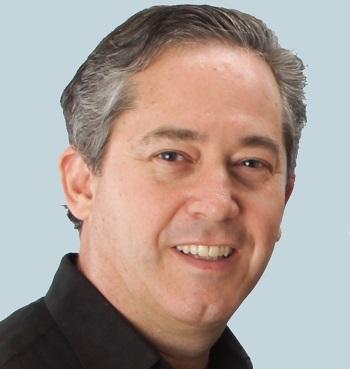
There’s a new emphasis in the software world with a focus on ease of use and more standardized platforms that support speed to market and innovation by makers.
In today’s world, the differences between consumer-friendly software and software used by technical users like engineers and scientists are increasingly hard to point out. In the past, these two types of software were dramatically different, not just because of the groups who were using them but also because of the user experiences they provided.
Now the industry demand for cross-functional and user-friendly software is higher than ever and software vendors are tasked with developing flexible technologies to meet these demands.
The maker movement is a perfect example of this in action. Makers are creating and building robots, motherboards and other ground-up technologies based on low cost components and software resources now commonly available and used by engineers. The maker movement has reinvigorated the engineering industry and proven that there’s a little bit of engineering in everyone.

The need for multi-functional, user friendly software is also applicable to the Internet of Things. IoT requires leveraging capabilities of newer, simpler tools and software into a wide range of specialized projects, some of which are created by engineers, but used by consumers. For example, consider the Nest thermostat, connected cars and Apple’s Homekit. The interface for software used in these devices must be approachable, easy to understand and functional.
The key for developers is to create software that has scalable components based on what the user’s need is. Companies build software platforms for a variety of reasons, but the fundamental goals they’re looking to achieve are similar. A platform environment can allow faster time to market, reduced training costs and a host of other benefits. A consistent interface simplifies the learning process, enabling extensibility so new capabilities can be added. It provides a consistent way of working across tools, and of course, it creates a flexible environment to enable a wide variety of solutions. By tracking toward these goals while they’re developing, software providers enable creators and users alike to become more productive.
[Learn how CIOs are shifting their focus to new IT and software models, as revealed in a SIM spending survey.]
A consumer-friendly example of this software platform concept is the iOS and Android software working in conjunction with a mobile device or personal computer. In the way the hardware and software come together for consumers, engineers can also benefit from a similar approach. Think of this like an Engineering OS (eOS). This approach is not literally an operating system, but rather a new, flexible, platform style approach to enable engineers to innovate faster and solve some of the world’s most complex challenges. Again, this shows the convergence of consumer and engineering software approaches. The concept is the same and the needs are similar, it’s just presented in a way that caters to the group using it.
 This convergence couldn’t have come at a better time for engineers. As technologies become more complex and the expected turnaround time is quicker, engineers need a software approach that combines usability with technical sophistication. Instead of focusing on complicated details, our world’s creators can now refocus on enabling grand and impactful technologies such as 5G and IoT. For example, the telecommunications industry is currently evolving and developing our latest 4G networks into the next 5G network and there are a variety of specific requirements associated with the effort. Engineers must find new ways to meet growing demand, more users and more data, all within an existing infrastructure. Building a software application tailored to these prototyping and development needs makes it possible for engineers to create an effective and efficient solution.
This convergence couldn’t have come at a better time for engineers. As technologies become more complex and the expected turnaround time is quicker, engineers need a software approach that combines usability with technical sophistication. Instead of focusing on complicated details, our world’s creators can now refocus on enabling grand and impactful technologies such as 5G and IoT. For example, the telecommunications industry is currently evolving and developing our latest 4G networks into the next 5G network and there are a variety of specific requirements associated with the effort. Engineers must find new ways to meet growing demand, more users and more data, all within an existing infrastructure. Building a software application tailored to these prototyping and development needs makes it possible for engineers to create an effective and efficient solution.No one is denying that our world is getting increasingly more complex and challenges are becoming harder to solve. People are being asked to do more, faster, with less money and fewer resources. The sooner there’s widespread adoption of the convergence of consumer and engineering software, the sooner we’ll be able to solve these complex problems more efficiently and in a more unified manner.
[Source:-Information Week]
